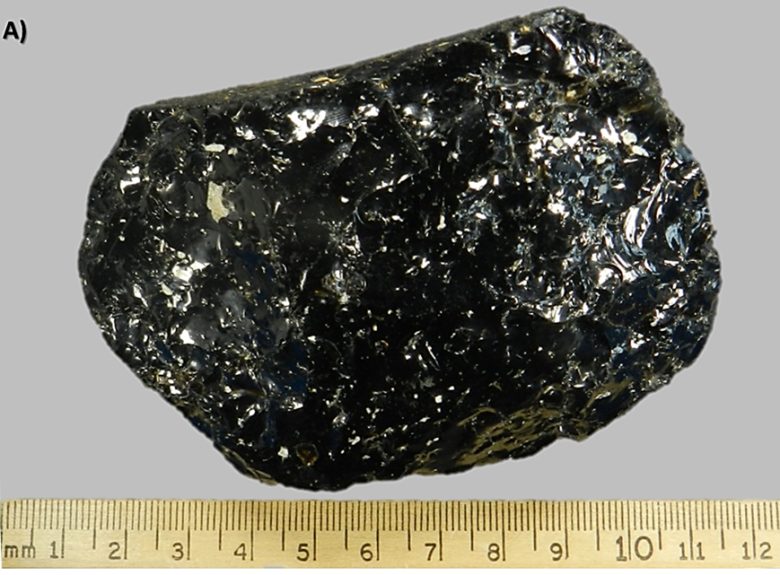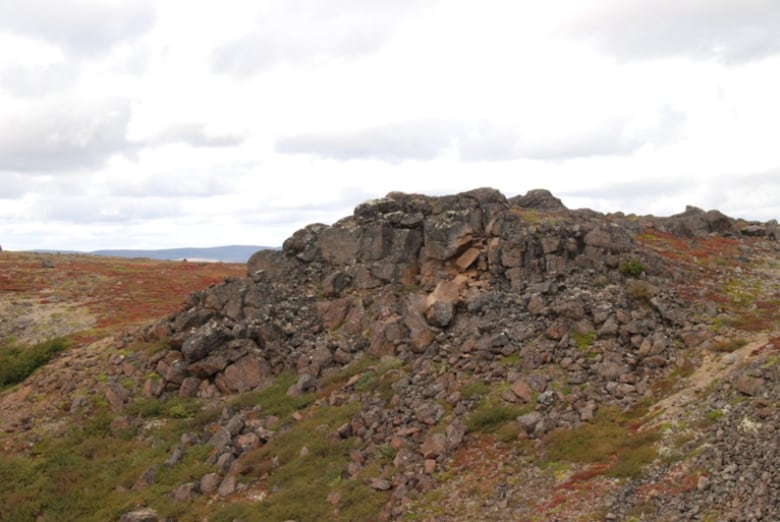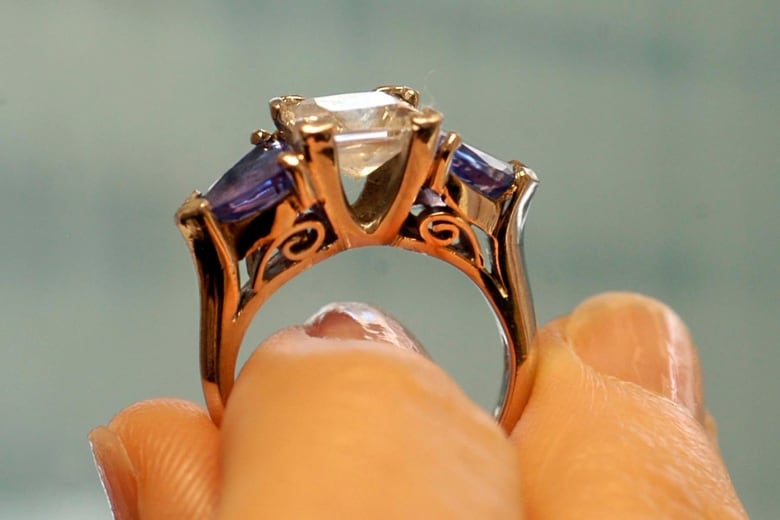Ancient Canadian meteor strike created hottest rock on Earth
Rock found at Mistastin Lake crater in Labrador heated to 2,370 C during impact

Millions of years ago, a city-sized asteroid smashed into Labrador with so much force that it heated rocks to a whopping 2,370 C the hottest temperature ever known for a rock on the surface of the Earth, scientists say.
The rock was found by Michael Zanetti, now a post-doctoral researcher in earth sciences at Western University in London, Ont., in 2011. At that time, he was part of a mock "mission to the moon" at28-kilometre-wide Mistastin Lake crater left behind by the powerful asteroid impact.
Now an analysis led by Nicholas Timms atCurtin University inPerth, Australia,reports evidence that the rock was exposed torecord-breaking temperatures described as "the highest recorded from any crustal rock." The research by Timms, Zanetti and colleagues in Australia, Switzerland and the U.S., was published in the journal Earth and Planetary Science Letters.

Mistastin Lake crater was created when a five-kilometre-wide asteroid exploded near the surface of the Earth just east of what is now the Labrador-Quebec interprovincial boundary 38 million years ago, when the early forerunners of today's horses, deer and rodents roamed North America.
Moon mission
The crater is used by space scientists as a stand-in or "analog" for the far side of the moon because both those places are covered in a type of pale-coloured rockcalled anorthosite, said Zanetti.

In 2011, the Canadian Space Agency funded three missions to the crater to test how efficient it was to have an astronaut and robotic rover exploring together, and Zanetti, then a PhD. student at Washington University in St. Louis, Mo., took part in the third.
"I was essentially assisting the proto-astronauts in note taking," he recalled.
The team was exploring about halfway up the wall of the crater called Discovery Hill, where youcan find solidified "pools" of rock that had been melted during the impact. Most of the rocks aredull, normal-looking volcanic rocks, Zanetti said.
"So when you see something that looks a little exotic, you're like, 'What the heck is that?'"
A fist sized, shiny, glassy rock sitting on the ground caught Zanetti's eye.

He brought it back to the lab, took a slice, and put it under the microscope.
"When we looked at this, we saw that there was this kind of weird-looking zircon grain."

Zircon is a special mineral to geologists because it doesn't melt, even at temperatures that melt all the surrounding rocks, and it's hard to break. That means it lasts avery long time and can be used to figure out how old the surrounding rocks are, Zanetti said.
In this case, the zircon grain was surrounded by a strange brown rim.
A colleague suggested that might be caused by decomposition. While zircon doesn't melt, it does break down into other minerals, zirconia and silica, when it gets close to 1,700 C.
Cubic zirconia clue
An analysis using an electron microscope confirmed that the grain was surrounded by zirconia.
Just like pure carbon comes in different shapes and forms, such as graphite, diamond and nanotubes, so does zirconia.

The best known is probably cubic zirconia, used to make "fake diamonds" for jewelry. It's manufactured at very high temperatures above 2,370 C because at temperatures below that, it tends to convert to other forms. During manufacture of cubic zirconia gemstones, a stabilizer is added to prevent that conversion.
Analysis of the zirconia in Zanetti's rock using techniques that he likens to"forensic geology"shows evidence that, in fact, it had once beencubic zirconia and was therefore heated to atleast 2,370 C before cooling. Because zirconia melts around 2,650 C, researchers know the rocknever got any hotter than that. (For reference, the surface of the sun is about 5,500 C).
While minerals are known to have formed at extremely high temperatures like that deep inside the Earth, this is the first time a rock formed at the surface is known to have been exposed to such a high temperature in a natural environment. (Much higher temperatures have been produced in artificial environments like the Large Hadron Collider).
Zanetti said the discovery is interesting to researchers because up until now, they've relied on computer models to estimate the temperatures produced in an asteroid impact like this, but didn't have any good physical evidence to back those up.
"This closes the gap a little bit."












_(720p).jpg)


 OFFICIAL HD MUSIC VIDEO.jpg)
.jpg)



























































































